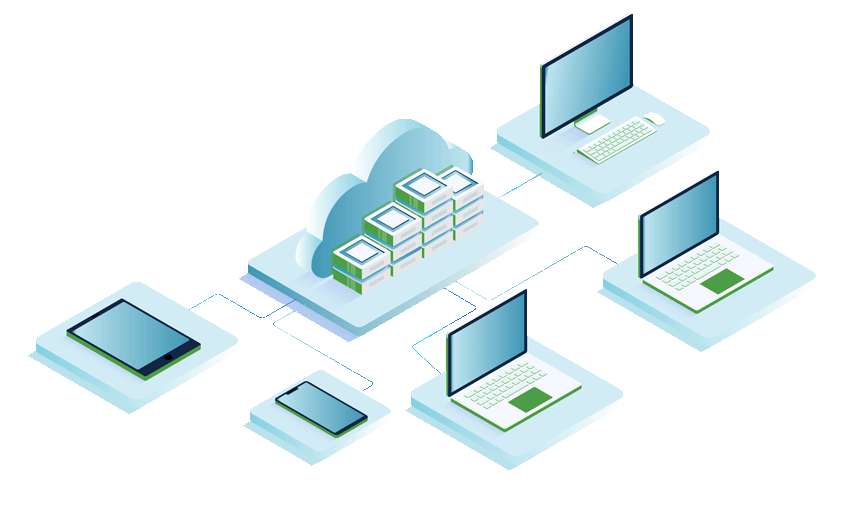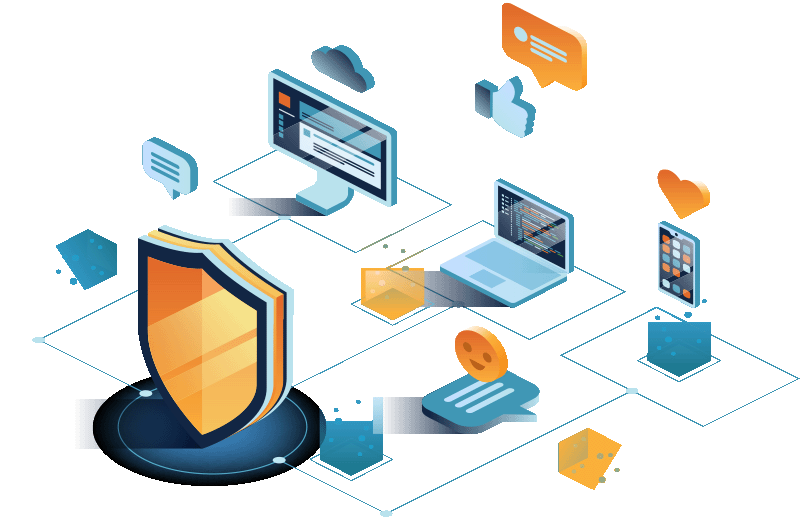Claims Management Software
Your Definitive Guide
A claim can have very different results, depending on how quickly and efficiently it is handled. Not only can the process have a significant impact on your end cost, but the experience itself can play a pivotal role in how customers view your organization. And claims management software is increasingly important in shaping that experience.
Claims are a high-stakes game. Just a 1% reduction in claims costs can add a sizable bump to your bottom line. And more than just hard dollars are involved. All it takes is one mishandled claim that goes viral to inflict lasting reputational damage.
Modern claims management software can lead to better outcomes both for organizations and claimants. It can streamline the entire claims process, from initial submission through final settlement, using automated processes, advanced analytics, and convenient tracking.
Adjusters have everything they need right at their fingertips to resolve claims faster and more accurately. And in some cases, claims management software can take over the process altogether with AI-assisted claims auto-adjudication.
You also get direct access to a gold mine of data collected on each and every claim, which can be used to optimize operations, enhance customer service, reduce fraud, and lower expenses.
Whether you intend to manage your own claims or manage claims on behalf of others, here’s what you need to know about today’s claims management software – and how to decide if a change is in order.

What is Your Current Claims Management Software Costing You?
Customer expectations are higher than ever. And if you don’t deliver, your reputation could go down faster than you can say social media.
The best way to keep customers happy – and costs down – is to resolve claims quickly and efficiently. What defines “quickly and efficiently,” however, is constantly evolving. As the saying goes, today’s innovation is tomorrow’s expectation.
The big question is are your tools up to date? Systems that rely on aging technology can be cumbersome to use and costly to maintain. It takes time to manually integrate data housed in separate systems. It takes time to wait for IT to figure out yet another patch to keep the system up and running. It takes time to comply with federal and jurisdictional regulations. It takes time for an outdated system to perform for any type of analysis beyond the most basic reports.
Every delay adds to the cost. Plus, the information you do get from these systems can be so unreliable that you end up making decisions based on gut instinct instead of verifiable data.

If you quantify the actual cost of those system deficiencies, inefficiencies, and inaccuracies, you will likely discover that you are spending more to keep the old system running than you would for new claims management software. And how much are those trust-your-gut decisions costing you?
To administer claims successfully, you need a deep understanding of the claims process, a knowledgeable team, and sophisticated software. Older systems often struggle to keep up with the advanced analytics, forecasting, system integration, data security, and ad hoc analysis so in demand today.
Ironically, many legacy systems are still in use expressly to save money – when in fact, these systems are often more expensive than new technology because of maintenance and data deficiencies that put you at an extreme disadvantage for administering claims effectively.
Exceed expectations by looking ahead at best practices and embracing change – whether that involves new technology, new processes, or new vendors. Organizations that are able to accomplish this will enjoy:
Reducing claims cost by as little as 1% can make a big difference in your bottom line.
What Can Claims Management Software Do?
Modern claims management software is designed to move every claim through the system with maximum efficiency to resolve even the most complex claims quickly, easily, consistently, and fairly.
Spreadsheets can do the job done just fine if you have a relatively small number of claims. Simply tracking a claim’s status, however, is not enough in today’s world. To effectively manage a large number or complex claims, you need to have efficient and reliable technology.
The latest claims management platforms support the entire claims lifecycle – first notice of loss, claims setup, assignment, investigation, reserves, litigation, settlement, regulatory compliance, and reporting – all within a single system. Top solutions provide automated workflows for best-practice consistency, seamlessly integrate data from third parties, and are quickly and easily modified to meet your needs. The most advanced solutions also offer predictive analytics to drive better decisions and implement more strategic initiatives.
Today’s claims management software delivers:
Better visibility.
Consolidating people, systems, and claims data from multiple sources into one location makes it easier and faster to uncover trends and relationships between disparate pieces of information.
Streamlined processes.
Intuitive mobile forms, automatic alerts, real-time access to data, integration with third-party systems, and instant data validation boost both efficiency and accuracy.
Earlier intervention.
Automated processes can easily analyze huge amounts of data to identify potential problems claims early on before a seemingly simple claim spirals out of control.
Reduced fraud potential.
Current technology is much more sophisticated than humans at detecting a claim’s potential for fraud.
Wiser use of resources.
Software can automatically route the most complex claims to seasoned adjusters for investigation and management, while routing routine claims to less experienced handlers.
Reduced leakage.
Increased jurisdiction acceptance rates can avoid fines and penalties.
Increased productivity.
Advanced reporting and analytics can track both individual adjuster performance and overall claims handling efficiency, and benchmarking alerts can notify you when a claim deviates from the expected path.
Stronger customer connections.
Customers who feel their claims were handled fairly and efficiently are more likely to remain loyal to your organization.
Smarter decisions.
An integrated system leverages all relevant data so you can make educated decisions faster – the impact of which becomes even more profound over time.
New Versus Old: Weighing Your Options
Purchasing new claims management software is by no means your only option. You also can upgrade your existing system.
Here’s a look at how those options compare:

Option |
Advantage |
Disadvantages |
|---|---|---|
| Next-generation claims management software |
|
|
| Upgrade current system |
|
|
What Are the Key Components of Claims Management Software?
Even the best software is virtually useless if it’s too difficult to use. Make sure your software is quick to learn, intuitive to use, and enjoyable to work with. In addition, it should be accessible from a variety of devices – phone, tablet, laptop, and desktop – so claim data can be captured quickly and accurately by anyone.
Claims administration software can cover a range of related activities. Some systems are a “one-and-done” type, while others allow you to start small and bolt on other capabilities as needed. Some of the most popular uses include:

Use |
Function |
Look For … |
|---|---|---|
| Audit | To gauge progress, ensure compliance, and evaluate results against past audit scores |
|
| Intake | To streamline claim and incident entry |
|
| Claims Regulatory Compliance | To monitor regulations and electronic reporting requirements |
|
| Data Transformation Services | To transform and validate data from external systems |
|
| Document Management | To electronically house all files related to claim activities |
|
| Electronic Report of Injury | To manage complex electronic filings for First Report of Injury (FROI) and Subsequent Report of Injury (SROI) for state workers’ compensation requirements |
|
| Reporting & Analytics | To create meaningful tables and charts |
|
| Reserve Management | To create and maintain financial integrity throughout the life of the claim and to evaluate loss exposures |
|
| Return to Work | To manage the return-to-work process to get ill or injured employees back to work quickly and safely |
|
| Workflow Management | To automate routine tasks, notifications, and alerts |
|
What Claims Data Can Tell You
Claims generate an abundance of data. The key is figuring out how to put it all to good use.
Artificial intelligence combined with big data can identify subtle but important patterns to guide decision making. You’ll be able to respond faster, allocate resources better – and even prevent similar claims altogether.
Claims data can be used to identify:
If It Isn’t Recorded, It Never Happened
Emails can get lost or misfiled. Tasks can get missed or forgotten. If an action isn’t recorded in the claim file, don’t consider it done. There are a lot of moving parts with a claim, so diligently record everything you can within the claim file – including adjuster notes, medical diagnosis, reserves, and settlement authority. That way, everyone involved knows exactly what has been done and who did it. Claims managers also can see the current status of a claim, check reserve or settlement requests, and review notes to see if everything possible has been done to mitigate the situation.
How to Diagnose Process Inefficiencies
A single claim can involve a multitude of people, systems, and vendors as it winds toward resolution. A high-performing claims process minimizes the number of touchpoints, eliminates unnecessary steps, and breaks down silos. To streamline your claims process, seamlessly connect all systems, strategies, and people.
Analytics can tell you when to bring in outside help to manage work levels, add expertise, or get someone geographically closer to the situation. Analytics also can be used to route simpler claims to less-experienced adjusters, freeing up seasoned adjusters for the most complicated claims. For maximum impact, focus first on key processes like return to work and reserve management and continue from there.
What Workflows Does Claims Management Software Support?
Claims management software is only as good as the process it supports. Before you sign on for a new system, it’s essential that you understand all of the intricate details—not just have a general idea – of your claim process.
Are there any redundancies, gaps, or inefficiencies that need to be addressed or eliminated? Do your adjusters regularly need to connect with HR, finance, accounting – or third parties such as ODG, ISO, OFAC, document management, and regulatory compliance?
Directly integrating with the internal and external systems used most can significantly reduce the amount of time adjusters spend gathering, prepping, rekeying, and submitting data. Think through your workflows and identify any issues early because making large-scale changes after implementation can be time-consuming and expensive.
Here are some of the processes to map out in advance:
How to Select a Claims Management Software Vendor
There is no shortage of vendors that say their software can administer claims efficiently. But sorting through these assertions to find the vendor that truly understands your needs, processes, issues, and pain points can be tricky. It takes plenty of research to uncover the truth about how well each vendor matches up.
Here are some considerations to help you narrow down the field:
Ease of use.
Is the software easy and intuitive to use? Is it designed around the way you work? The easier the software is to navigate, the more efficient users can be. Claims professionals manage heavy workloads, so it should be as easy and enjoyable as possible to review claims, enter notes, set reserves, approve payments, and do all of the other tasks that consume their day.
Convenience.
How convenient is it to report claims? Is the software easily accessible from any device? Easy and accurate claim entry is one of the most critical functions of claims administration software. Intuitive, mobile-friendly, and standardized forms not only make it easy to report claims, they also ensure that the data captured is accurate and complete.
Automation.
How many tasks does the software automate? Software that automates routine tasks – e.g., generating correspondence, assigning follow-up tasks, and scheduling payments – gives adjusters and supervisors more time to focus on higher-value activities that improve claim outcomes.
Functionality.
What systems can be integrated into your claims management software? Many adjusters rely on data from internal departments like HR, finance, and accounting, as well as from other third-party sources like Official Disability Guidelines (ODG), ISO, Office of Foreign Assets Control (OFAC), CMS, medical bill review, pharmacy management, document management, vendors, and regulatory compliance. Automatically integrating this data with your claims administration system can significantly reduce the time spent gathering, prepping, rekeying, and submitting data. A direct interface also means the data is more accurate, which makes for better decisions.
Flexibility.
Will you be able to make adjustments to accommodate changing market conditions without enlisting the help of the vendor – or your IT department? Highly configurable systems allow you to quickly and easily modify business rules, change workflows, and add data.
Intelligence.
Does the software have advanced reporting and analytic capabilities? Analytics are critical for tracking individual claim performance and potential outcomes, which will help you discover trends, gain insights, and reduce costs.
Security.
Is the system cloud-based – and is it public or private? Is the system locally hosted? Do you have the in-house expertise to manage maintenance and updates? And do you have the budget to handle the hardware and software expenses? Make sure your data is protected behind a secure firewall with a robust disaster recovery program in place.
Experience.
Does the vendor have demonstrated expertise in risk, claims, and insurance technology, implementation, compliance, and support? Is there schedule for implementation and training? Will implementation be handled by the vendor or through a third party? Purchasing claims administration software is a big commitment. Make sure the vendor you select has the flexibility, scalability, longevity, and customer service to support you well into the future.
Separate Vendors from True Partners
The claims vendor list is long – attorneys, medical professionals, auto-repair shops, contractors, medical case managers, and the all-important TPA. Not only are you spending good money for their services, these vendors represent your company. And both your reputation and your bottom line are at risk.
Strengthening these vitally important relationships can both lower costs and improve customer service. Quantitative measures – claims resolution costs, timeframes, closing rates, etc. – are certainly important. But it’s the qualitative factors that can make or break the relationship.
Strong vendor relationships can balance workloads, control costs, and drive efficiency. The key is to build a collaborative, cross-functional team that works well together.
Here are four tips to set you up for success:
1. Get to know vendors personally. Having a human connection paves the way to open communication and constructive collaboration. Meet the people who are working on your claims, and get to know them personally. A little old-fashioned rapport with who is on the other end of the line also makes it much easier to deal with any issues that do come up.
2. Establish clear expectations. Spell out realistic, clear, and concise instructions, and include all the right controls for response time, reserve increases, settlement authority, etc. And make sure the vendors’ employees are well trained in executing those instructions.
3. Hold vendors accountable. Vendors need to have skin in the game. Make sure they are hitting key metrics and are following your instructions. And know when to step in to keep things on track. It’s also important to monitor vendor performance to reduce claim leakage and expense on your bottom line.
4. Seamlessly integrate systems. The more vendors that can automatically integrate with your system, the better. Direct data feeds eliminate the need to manually input data – which reduces human error, simplifies communication, and frees up staff for more valuable tasks.
How to Get the Most Out of Dashboards
Dashboards are essential for managing claims effectively.
A well-executed dashboard shows you everything you need to assess the health of your claims operation at a glance. You can find answers and visualize KPIs in real time. And graphics make complex information instantly understandable.
Building an effective dashboard starts with deciding which metrics to display. What information do you need to make sure claims are being handled efficiently? Keep your dashboard focused on the six to eight metrics you need to do your job effectively. Any more than that will make your dashboard cluttered and hard to read – which defeats the whole purpose.
Commonly tracked KPIs (daily, weekly, or monthly) include:
A good dashboard:
Even the best dashboard is worthless, however, if it isn’t combined with thoughtful analysis and attentive follow-up.
How to Build Support for New Claims Management Software
The longer a claim stays in the system, the more expensive it usually gets. So, anything you can do to hasten the claims process will likely reduce costs.
New claims management software can help you resolve claims faster with better outcomes. Sophisticated capabilities give you the ability to detect subtleties in the data – for potential fraud, litigation, subrogation, and other troubling claim trends – and to comply with regulatory reporting requirements. And claims more likely to drive up expenses can be routed to expert resources for better productivity and performance.

The right technology will help you take advantage of all the claims data you’ve been collecting. Advanced analytics can transform data into insights that will help you make better decisions, root out fraud, reduce cycle time, and allocate resources more effectively. Making good use of dashboards and reporting keeps your thumb on the pulse of the claims process, while improving communication with top management, and enhancing collaboration among the entire claims operation.
Technology is also the springboard for improving other aspects of your claims process. Strengthening your relationships with vendors – including seamlessly integrating with their systems – can yield impressive results. And it’s worth taking another look at your processes with an eye toward automation where appropriate to add consistency and speed to the claims process.
Justifying a purchase when you already have a system in place, however, can be a challenge. Start by quantifying the true cost of the current system. How much time and money are you spending to patch, upgrade, or revise the software? How much time is wasted logging on to separate systems or tracking down necessary data? How much time is spent manually entering data?
Attaching numbers to those delays and inadequacies can cast that system in a whole new light. And then there are costs that are harder to quantify. What is the added cost of claims delayed by system breakdowns? How much are your decisions unsupported by timely and accurate reports costing? What is the cost of opportunities missed because of incomplete or inaccurate data? And do you trust your current system to properly maintain records – or are you keeping back-up paper files “just in case”?
Legacy systems, budgetary constraints, and overworked employees all can make change an uphill battle. But even small improvements in the way claims are handled are worth it when you add up the potential savings – which goes right to the bottom line.
And that is sure to be welcome news to the C-suite.
For more on taking your claims management process to the next level, download our e-book, Claim Success: How to Achieve Excellence in Claims Management, and check out Riskonnect’s Claims Administration software solution.





